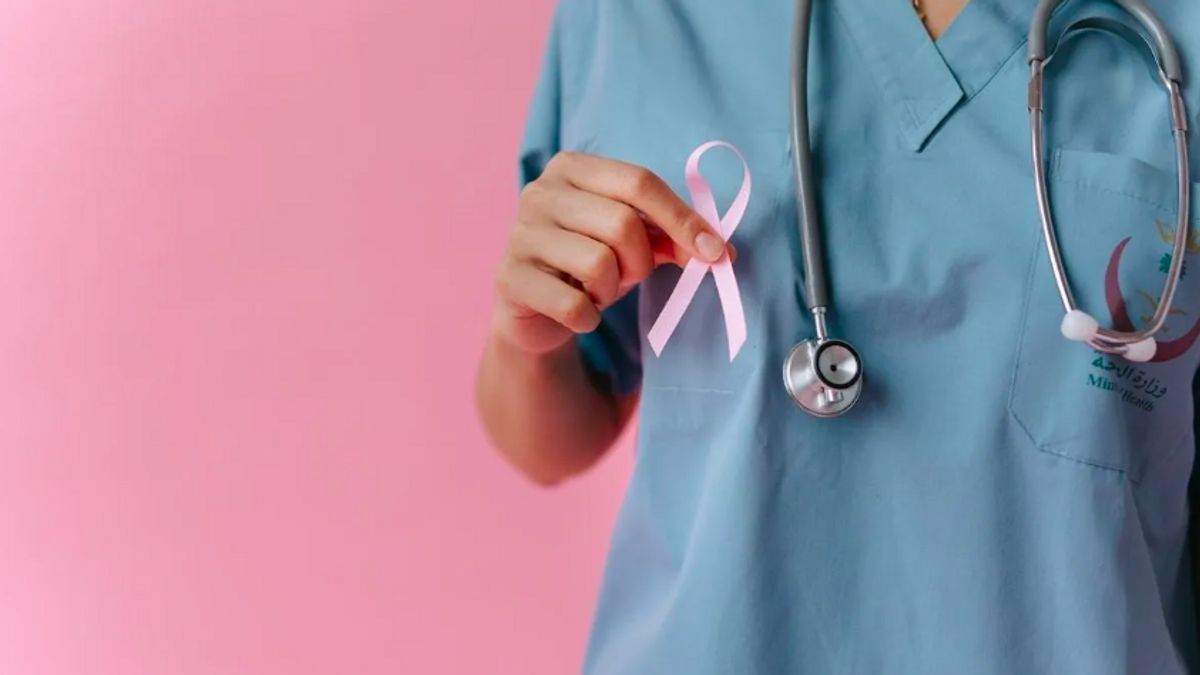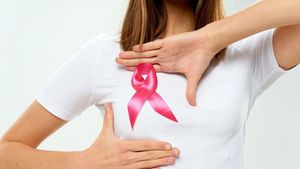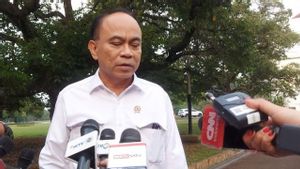JAKARTA - Breast cancer is among the most common types of cancer, especially among women. Although many people think that breast lumps are the only major sign, in fact, the symptoms of breast cancer are often not felt.
Yes, early symptoms of breast cancer can appear without clear pain or changes, awareness of unusual signs is essential for early detection and successful treatment.
At least, it was said the head of the breast surgery division at the Fox Chase Cancer Center, Richard J. Bleicher, MD, he said, breast cancer can not cause symptoms and everyone feels different.
According to Dr. Bleicher, the symptoms are often as swelling in the breasts, spine, or armpits, featuring orange skin, nipples, redness or thickening of the breast skin and discharge of fluid from a tornado.
The Amarican Cancer Society (ACS) revealed nearly 311,000 breast cancers are newly diagnosed in the US each year in women, while nearly 3,000 cases are diagnosed in men. Currently, the United States Preventive Services Task Force (USPSTF) recommends that women start breast cancer testing every two years, starting at the age of 40.
ACS mengelompokkan dua jenis utama kanker payudara noninvasif atau yang belum menyebar dan yang sudah menyebar atau invasif.
SEE ALSO:
SEE ALSO:
Meanwhile, what can be changed according to dr. Wael Harb, MD, a medical oncologist at the American MemorialCare Cancer Institute is physically inactive, body weight, having the first pregnancy after 30 years of breastfeeding, drinking alcohol and smoking.
Receiving a diagnosis of breast cancer can be scary, but doctors agree that there are many treatment options available to most patients.
"Currently, a woman diagnosed with breast cancer has a much better prognosis than before," said Wael Harb.
Currently, the five-year survival rate for breast cancer cases ranges from 86 percent for cancer that has spread outside the breast to surrounding areas, up to 99 percent for cancer that has not spread outside the breast.
"Now we have better treatments that are less invasive, with fewer side effects," said Dr. Bleicher.
Treatment options include chemotherapy, radiation therapy, hormone therapy, surgery, target therapy, and biological therapy, said Dr. Harb. (Ant)
The English, Chinese, Japanese, Arabic, and French versions are automatically generated by the AI. So there may still be inaccuracies in translating, please always see Indonesian as our main language. (system supported by DigitalSiber.id)

















